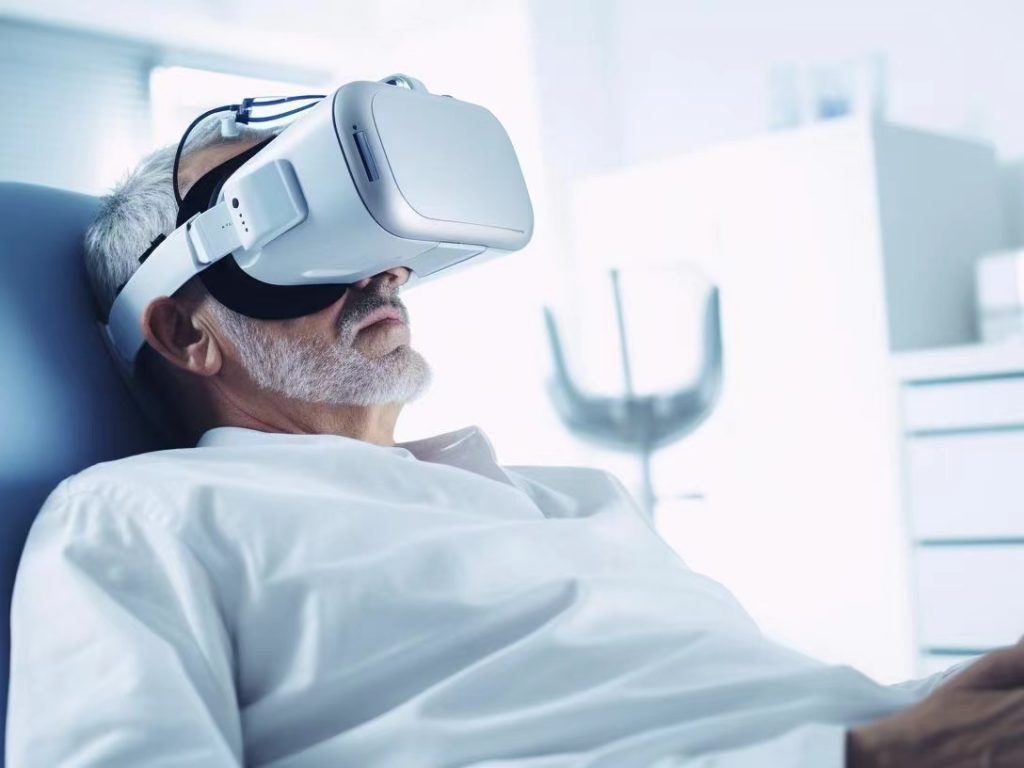- We discuss the effects of VR headsets on eye fatigue and motion sickness, noting improvements in newer models.
- It highlights the importance of taking breaks and addressing digital eye fatigue, emphasising the need for moderation and awareness of screen time to maintain eye health.
- Additionally, it addresses concerns about blue light exposure and recommends measures like software-level filters and taking regular breaks to alleviate strain.
Whether you’re venturing into the realm of virtual reality for the first time or you’re a seasoned veteran of the metaverse, understanding how VR headsets affect your eyes is a question worth knowing the answer to.
We’re still far from spending every day in this exciting new world, a world made up of truly immersive video games and virtual experiences, and until that day arrives, you still need those goggles.
Eye fatigue isn’t unique to VR. Wearing a headset may cause some people their first experiences of motion sickness in VR, but if a bit of eye strain is your concern, fret not: its causes are not unique to VR, and the remedies are much the same. If you’ve heard the old adage that sitting too close to the TV screen will harm your eyes, your concern about VR is entirely understandable. The idea here is similar: with a headset on, the high-resolution screen is just millimetres away from your retina.
While wearing the headset, your vision is actually shaped by two intricately shaped lenses to form images from the screen, but my point still stands. If you’ve spent long periods of time working on a computer, you’re well aware of the drawbacks of prolonged screen time. Just as reading small fonts for extended periods can cause strain, screens also cause this effect in another way: blue light. So it is in VR as well.
Also read: Can Africa’s internet infrastructure cope with the future?
Also read: Artificial intelligence (AI) in everyday life
Why are virtual reality headsets bad for your eyes?
Early VR headsets were thought to induce fatigue and motion sickness, with the two often difficult to distinguish. However, with the improvement of pixel density and refresh rates in embedded panels, our brains have detected significantly enhanced unreal, and therefore motion-sickness-inducing, blurry images. The notorious screen door effect that plagued early models – caused by your eyes being too close to too few pixels – has all but disappeared on advanced headsets like the Oculus Quest 2 and Valve Index.
We’re fortunate to have never encountered major issues in our generation; from standing in the rain with beloved anime character Totoro in the initial single-screen, low-resolution Oculus Rift DK2, to racing against time to kill zombies in “The Walking Dead: Saints & Sinners,” to touring Bilbao, Spain, in a truck in Oculus Quest 2. It’s the kind of game-changing experience we dreamed of as kids, one we believe everyone should try.
However, we must admit, older and younger family members thrown into the abyss of the VR ecosystem during experiments either experience motion sickness or find focusing on images strenuous, even without any discomfort. These side effects are understandable, a natural response. Most people aren’t used to having a screen so close to their eyes, let alone two screens behind a glass panel designed to distort and segment images projected into their peripheral vision.
These effects are not lasting. They fade the moment the headset is removed. Like optical illusions – which VR essentially is – our brains need time to “get it,” meaning our eyes initially strain to focus, resulting in overexerted and stiff muscles, leading to – you guessed it, eye fatigue.
So what can you do?
While your eyes will adapt to the VR experience with enough practice and patience, it doesn’t mean you’ll ultimately be entirely free from its effects. Digital eye fatigue isn’t exclusive to VR. Stare at anything long enough, whether it’s your desktop computer screen, laptop, phone, or tablet, and you’ll experience it.
The issue isn’t so much the proximity of the screen. It’s that we haven’t taken enough measures to relax the muscles that eventually become strained. Last year, the BBC reported a doctor implying their patients’ vision damage was due to VR. In response, Ceri Smith-Jaynes from the Association of Optometrists said, “…there is no reliable evidence to suggest that VR headsets cause permanent vision deterioration in children or adults.”
Big tech companies now understand that the blue light emitted by most screens plays a significant role in the fatigue we experience from prolonged screen time. It also prevents our brains from releasing natural chemicals that help us relax, leading to insomnia at night. That’s why software-level blue light filters like Night Shift and TrueTone are endorsed by Apple, Google, and Microsoft, and why tinted glasses are ubiquitous on Amazon. As someone whose work-life revolves around staring at screens for up to 16 hours a day, we can confirm these measures indeed help. The Oculus Quest 2 even has a built-in night mode for this reason.
But we can’t blame everything on blue light. Nor can we expect a filter to solve all our problems. After all, books don’t emit blue light, yet we still experience eye fatigue while reading a good story. And it all boils down to the distance issue.
If you’ve ever worked in an office, you’ve probably been told to occasionally look away from your screen. The official guidance is to take a 15-minute break every hour. Not that everyone’s boss would allow them to do so, but it’s recommended for eye health.

